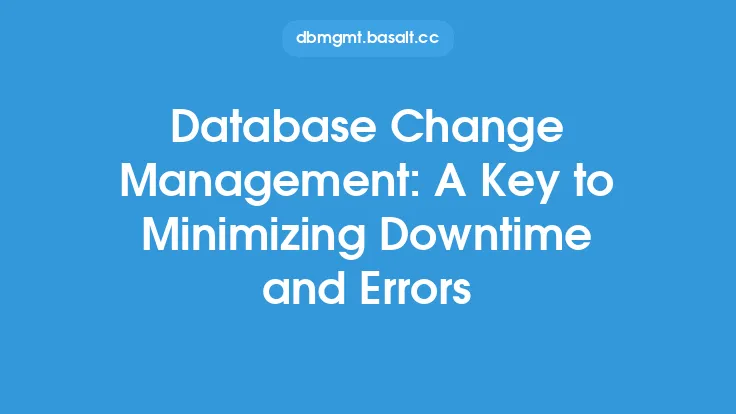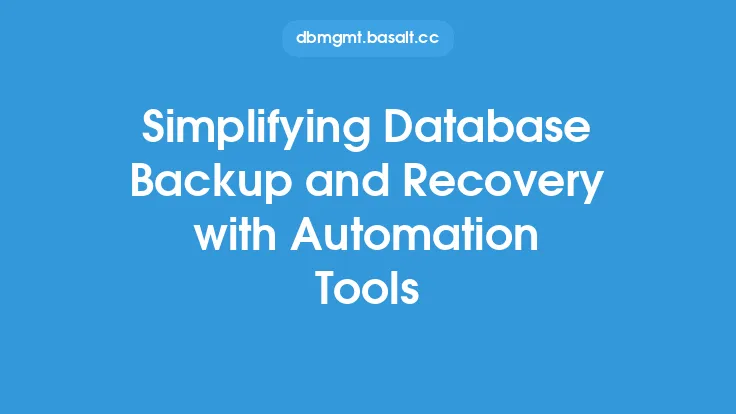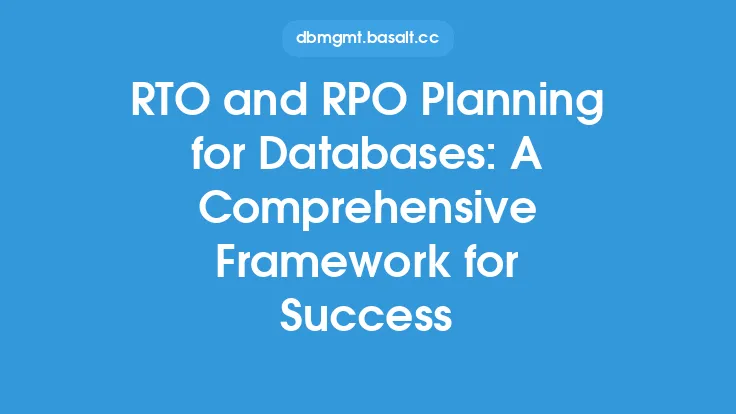In today's data-driven world, databases are the backbone of any organization, storing critical information that is essential for business operations. However, databases are prone to failures, corruption, and data loss due to various reasons such as hardware failures, software bugs, human errors, and cyber-attacks. To mitigate these risks, backup automation for databases has become a crucial aspect of database management. Backup automation involves the use of specialized tools and software to automatically backup database files, ensuring that data is safe and can be easily recovered in case of a disaster.
Introduction to Backup Automation
Backup automation for databases is a process that involves scheduling and automating the backup of database files, logs, and other critical data. This process ensures that data is consistently backed up, reducing the risk of data loss and downtime. Backup automation tools use various techniques such as snapshotting, replication, and compression to ensure that backups are efficient, reliable, and secure. These tools also provide features such as automated scheduling, notification, and reporting, making it easier for database administrators to manage backups and ensure data integrity.
Types of Backup Automation
There are several types of backup automation techniques used for databases, including:
- Full backups: This involves backing up the entire database, including all files, logs, and data.
- Incremental backups: This involves backing up only the changes made to the database since the last backup.
- Differential backups: This involves backing up all changes made to the database since the last full backup.
- Transaction log backups: This involves backing up the transaction logs, which contain a record of all changes made to the database.
- Snapshot backups: This involves creating a snapshot of the database at a particular point in time, which can be used to restore the database in case of a failure.
Benefits of Backup Automation
Backup automation for databases provides several benefits, including:
- Reduced downtime: Automated backups ensure that data is available and can be quickly recovered in case of a disaster, reducing downtime and minimizing the impact on business operations.
- Improved data integrity: Automated backups ensure that data is consistent and accurate, reducing the risk of data corruption and loss.
- Increased efficiency: Automated backups save time and effort, allowing database administrators to focus on other critical tasks.
- Enhanced security: Automated backups provide an additional layer of security, ensuring that data is safe and can be recovered in case of a cyber-attack or other security breach.
Best Practices for Backup Automation
To ensure effective backup automation, several best practices should be followed, including:
- Developing a comprehensive backup strategy: This involves identifying the types of backups required, the frequency of backups, and the storage location of backups.
- Using automated backup tools: Automated backup tools provide features such as scheduling, notification, and reporting, making it easier to manage backups.
- Testing backups: Regular testing of backups ensures that data can be recovered quickly and efficiently in case of a disaster.
- Storing backups securely: Backups should be stored securely, using techniques such as encryption and access controls, to prevent unauthorized access.
Common Backup Automation Tools
Several backup automation tools are available for databases, including:
- Veritas NetBackup: A comprehensive backup and recovery solution that provides automated backup and restore capabilities.
- IBM Spectrum Protect: A data protection solution that provides automated backup and restore capabilities for databases.
- Veeam Backup & Replication: A backup and replication solution that provides automated backup and restore capabilities for virtualized databases.
- Oracle Recovery Manager: A backup and recovery solution that provides automated backup and restore capabilities for Oracle databases.
Challenges and Limitations of Backup Automation
While backup automation provides several benefits, there are also several challenges and limitations, including:
- Complexity: Backup automation can be complex, requiring specialized skills and knowledge to implement and manage.
- Cost: Backup automation tools can be expensive, requiring significant investment in software, hardware, and personnel.
- Storage: Backup automation requires significant storage capacity, which can be a challenge for large databases.
- Security: Backup automation requires robust security measures to prevent unauthorized access to backups.
Future of Backup Automation
The future of backup automation for databases is likely to be shaped by several trends, including:
- Cloud-based backup: Cloud-based backup solutions are becoming increasingly popular, providing scalable and on-demand backup capabilities.
- Artificial intelligence: Artificial intelligence and machine learning are being used to improve backup automation, providing features such as predictive analytics and automated backup optimization.
- Containerization: Containerization is being used to improve backup automation, providing features such as automated backup and restore for containerized databases.
- Edge computing: Edge computing is being used to improve backup automation, providing features such as real-time backup and restore for edge-based databases.
Conclusion
Backup automation for databases is a critical aspect of database management, providing several benefits, including reduced downtime, improved data integrity, and increased efficiency. By following best practices, using automated backup tools, and staying up-to-date with the latest trends and technologies, database administrators can ensure that their databases are protected and available, minimizing the risk of data loss and downtime. As databases continue to play a critical role in business operations, the importance of backup automation will only continue to grow, making it an essential aspect of any database management strategy.





